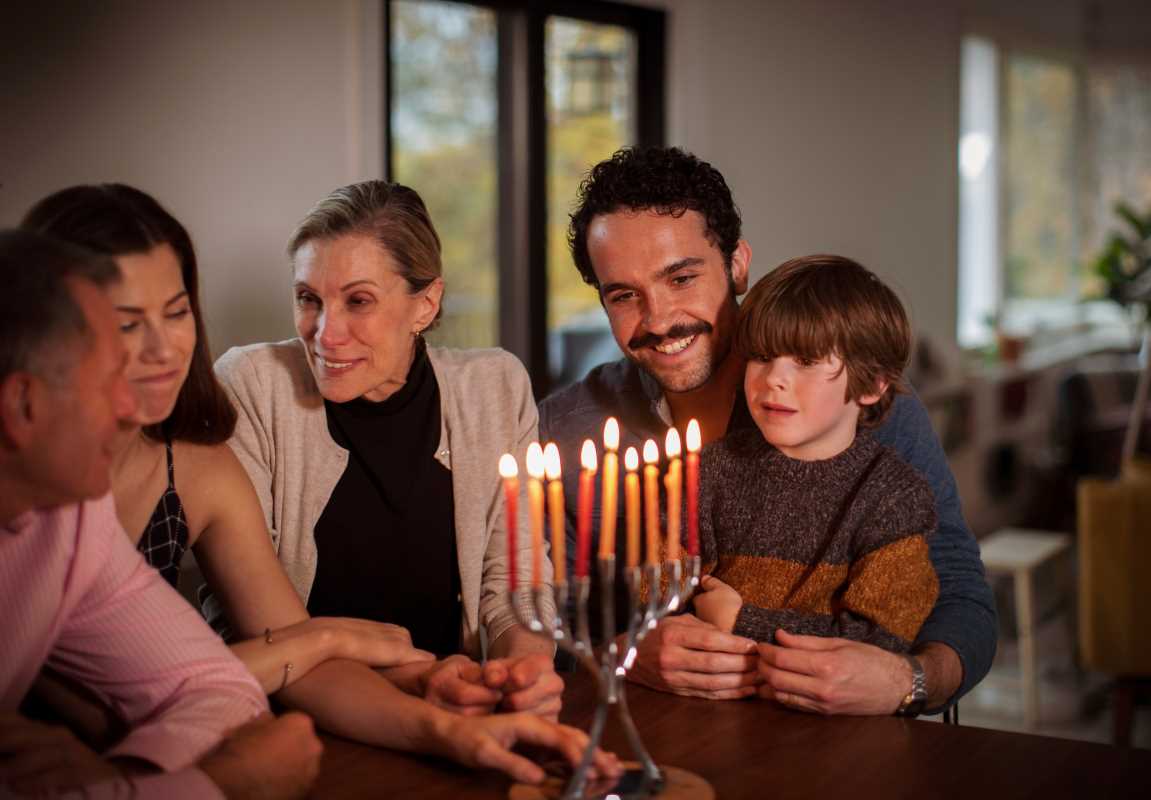Fresh seasons bring opportunities to make memories that last well beyond the shifting weather. Small, meaningful rituals can turn everyday routines into special moments, filling your home with laughter and a sense of togetherness. Whether you light candles on chilly evenings or enjoy a picnic as the sun sets, these simple acts help strengthen connections among family and friends. Focusing on kindness, shared smiles, and unexpected delights, you create a comforting rhythm that everyone looks forward to. Over time, these traditions become the stories you reminisce about, reminding everyone how much joy can be found in daily life together.
Instead of sticking strictly to traditional calendars, look for overlooked moments throughout the year. A midweek breakfast picnic on the first warm morning or a secret note exchange at dinner can become the threads holding family life together. With some creativity and persistence, you'll see how these fresh practices develop a tapestry of belonging.
Refresh Your Family’s Annual Rhythm
Family rituals often settle into predictable patterns—birthday cakes, holiday gatherings, and vacation drives—yet those familiar forms can become dull when everyone knows the routine. Instead of adding another gift or flashy announcement, take a different approach that taps into everyone’s passions. Perhaps you notice the first hummingbird on your backyard suet feeder and share sketches over cocoa. Or you choose a theme song each season and surprise each other with a short dance or homemade music video. These small twists keep anticipation alive and give each member a chance to shape the story.
Looking for overlooked opportunities to connect means paying attention to daily moments where time often slips by unnoticed. It could be the five minutes between school drop-off and work naps or the moments right after soup bowls land on the table. Gentle signals, like a designated tune or a family stare-of-the-week award, help turn fleeting minutes into heartwarming memories. Over time, these micro-events accumulate, creating a feeling that every snow-covered landscape or burst of blossoms carries family footprints.
Inside Tips for Creating “Lasting Traditions”
- Family Story Capsule Box: This idea uses a simple cardboard box covered in art supplies to collect notes, drawings, and tiny artifacts like movie ticket stubs or leaf rubbings. Its strength lies in blending creativity with surprise, as new contributions arrive unpredictably. To use it: 1) Place the box in a common area; 2) Invite each family member to add something weekly; 3) Label each item with the date and a doodle; 4) Store it away at seasonal milestones; 5) Reopen on the same date next year. The cost depends on craft supplies—under $20 locally—and it works anywhere you can keep a small container. Insider tip: Change the box’s lid design each year to keep excitement fresh, and don’t throw away early entries so the timeline remains intact.
- Rotating Recipe Roulette: Gather ten seasonal recipes on index cards, mixing comfort dishes and new finds. Its special charm comes from combining nostalgia with experimentation, sparking conversations when someone draws Greek lemon chicken instead of the usual brownies. Steps: 1) Collect recipes and write them on cards; 2) Drop the cards into a jar; 3) Draw one before weekend groceries; 4) Cook together as a team; 5) Rate the dish on a chalkboard. You can start without cost if you already have recipes, and it works in any region where basic groceries are available. Pro tip: Add a wildcard card labeled “guest chef” so kids can invite a neighbor or grandparent to share cooking secrets.
- TraditionTracker App Scheduler: This mobile tool sends gentle reminders of yearly rituals and allows photo attachments. Its benefit comes from providing gentle nudges without cluttering your main calendar. How to set it up: 1) Download the free version; 2) Create entries for events like “First March walk”; 3) Set reminders at your preferred intervals; 4) Upload snapshots after the event; 5) Share notifications with all family phones. The free tier covers up to five templates, and upgrades cost about $5 annually. A caution: Don’t overload notifications; stick to one or two reminders so it feels inviting, not burdensome.
- Seasonal Soundtrack Playlist: Create a streaming playlist that captures each season’s mood—chiming bells in winter, folk beats in spring. Its limitation is the need for streaming access, but it becomes a soft ambient cue during meals or drives. Steps: 1) Pick 12–15 tracks per season; 2) Label playlists clearly; 3) Queue each season’s list at the equinox or solstice; 4) Encourage everyone to suggest one song; 5) Reflect on why each tune feels right. Most streaming platforms offer free ad-supported tiers; offline listening may require a subscription. Insider tip: Include clips of family voices—kids naming their favorite flavors or jokes—to make it feel truly personal.
- Outdoor Scavenger Sprint: Make a list of five seasonal items—pinecone in summer, frost pattern in autumn—that family members find on weekend walks. This turns ordinary park visits into treasure hunts and helps see familiar trails with fresh eyes. To start: 1) Write your list on cardstock; 2) Laminate if desired; 3) Hand out clipboards; 4) Set a time limit; 5) Compare photos or finds under a backyard tent. Costs depend on printing—often under $10—and it works anywhere with minimal plants. Insider tip: Rotate the hunt leader each season so different family members create the next list, adding their personal touch.
Hands-On Techniques for Seasonal Rituals
Creating rituals works best when steps are clear and hands stay busy. Physical tasks build anticipation and help everyone understand their role, allowing traditions to flourish. Here’s a simple sequence to launch any new activity:
- Gather supplies in a central spot to signal that the ritual will start soon. A dedicated basket or shelf works well.
- Explain each person’s task aloud, from fetching spoons to drawing decorations, so everyone knows their part.
- Divide roles based on interest or ability; younger kids can sort items, while older ones handle more complex tasks.
- Set a timer or play a 10-minute song to keep energy high and maintain a playful tone rather than making it stressful.
- Celebrate the finished activity with a small reward—a special sticker or extra bedtime story—to reinforce satisfaction in the routine.
These numbered steps give structure but also leave room for small adjustments you’ll find over time. Let each season’s version evolve with new supplies or quick rituals at the end, like a group cheer or shared high-five, to keep the framework lively and relevant.
Pro Tips and Common Mistakes to Watch Out For
Avoid letting a bright idea fade because everyone forgets where you stored the craft supplies. Use labels and clear bins so materials stay visible. If interest drops, ask each person for one suggestion to tweak the routine—this keeps everyone involved and freshens the traditions.
Don’t pack your schedule with too many new rituals at once. Focus on one or two ideas first to give them time to settle into your calendar. Rushing to add more risks turning rituals into chores. The best traditions grow gradually, like a garden with just enough water and sunlight.
Adding Meaningful Moments with Outside Resources
Sometimes outside inspiration provides the spark you need. Look for local art fairs offering hands-on weaving workshops or community storytellers performing in backyards. These gatherings help connect your personal rituals to the broader community life.
Use outside ideas as seeds for your own unique traditions, then adapt them so your household can claim each ritual as a genuine family creation.
Each season offers your family a chance to create lasting memories. Design personal rituals, listen closely, and your thoughtful actions will resonate for years.
 (Image via
(Image via





